Learn more about the Story-Based Technical & Compliance eLearning Design Workshop. Please click here.
Workshop Tip #31: Plus more tips. See below.
Small Bites Learning - Fast, Cheap, Flexible and Learners Love Them!
 By Ray Jimenez, PhD By Ray Jimenez, PhD
Chief Learning Architect
Vignettes Learning
Is it at all possible to reduce large content into small bites that's faster, easier and easily usable by learners?
The answer is NO, if we think of designing and developing content following the old-fashion linear method of learning design. A big YES, if we focus our efforts on understanding learners' concerns first and foremost, then design and deliver from that vantage point. That is why and how the lady in the photo below learns - by bits and pieces or by small bites along the way.

I just concluded a webinar with over 1,200 people registered. The topic was Small Bites Learning. Please click here to preview the recording.
 
There are two ways we can approach Small Bites Learning.
- Lesson and Content Level - how to use Small Bites Learning in our typical elearning lessons
- Macro-Enterprise Level - how to use Small Bites Learning in implementing large-scale initiatives.
We focus on the Lesson and Content Level in this Workshop tip.
Tied-up or restricted: Learning Objectives, Content and Context
In a typical lesson and course, the objectives, content and context are hard-coded or hard-wired together within the learning design. Typically, the lesson starts with the learning objective, the content and then context. Context means applications of the content in the learners' world.
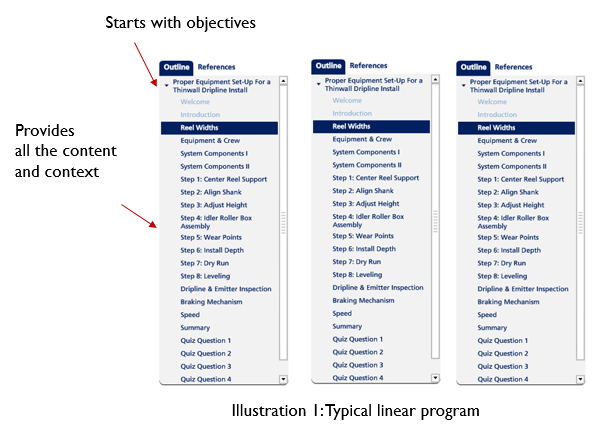
The consequences of the linear design program dampens the learners' ability to learn faster. This is shown in illustration 1.
- Lessons are focused on trainer's objectives and context; not that of the learner.
- Designers and trainers tend to engage learners by entertaining them with multimedia, games, exercises and other interactions - yet the focus is still on memorization.
- The lessons are bounded and are organized as a big piece of content.
These issues make it difficult to design Small Bites Learning and therefore companies miss the opportunities for cheaper, faster and better learning experiences.
Focusing the objectives, content and context on learners' concerns
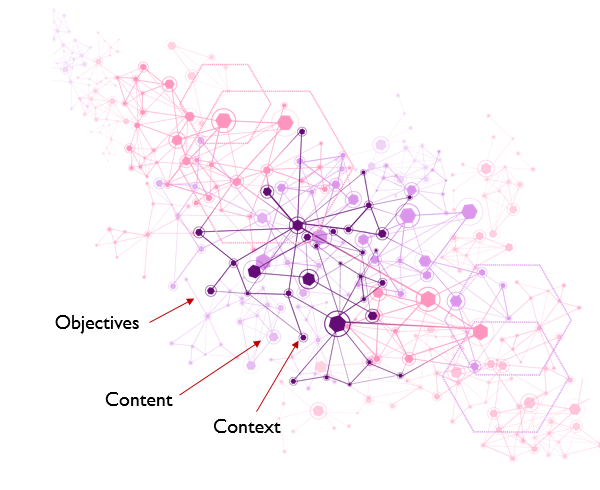
Illustration 2
In Small Bites Learning, we need to free the objectives, content and context and make the meet the following attributes:
- Independent
- Useful standalone
- Consumable
- Reusable
- Flexible
- Accessible
- Integrable
- Searchable
- Easily combined
- Configurable
How Small is Small
In trying to answer the question, how SMALL is SMALL, I found an inspiration from the book "Life in 5 Seconds."
Ask yourself, are the pictorials below small enough to allow learners to illicit learning?

What comes to your mind?
Illustration 3 - Image from Life in 5 Seconds. The answer "Picasso."
Make a guess. What instantly comes to your mind when you see the illustration 3 pictorial?
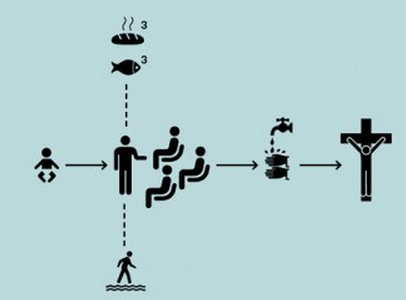
Illustration 4 - Image from Life in 5 Seconds.
Make a guess. What instantly comes to your mind when you see the illustration 4 pictorial? The answer "Jesus Christ."
In both illustrations 3 and 4, the pictorials are so minimal that they only contain and express the essentials. Each pictorial shows the small content. The learners inject their own learning objectives and context. So, the small bites learning experience allows the learners to focus on their own objectives and context because the content is so small that it allows the learners to think and reflect.
Contrary to the linear content where objectives, content and context and "forced" by the course, Small Bites Learning allows learners' concerns to surface.
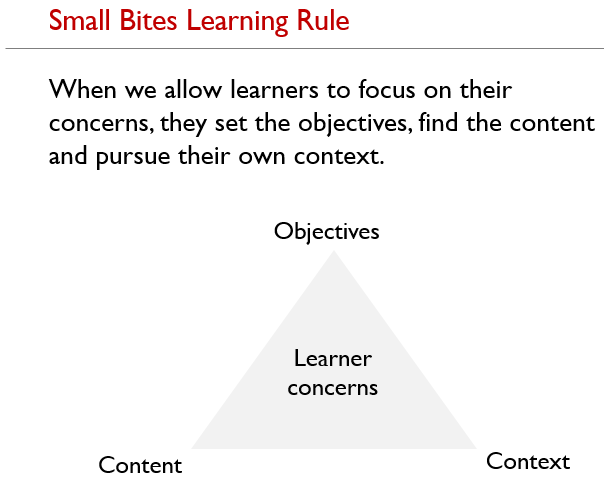
Practical and useful examples and demos
Let us put the concept of Small Bites Learning in a simple practical useful examples and demos.
"Should I Hire a Pregnant Woman?"
Play the demo link below.
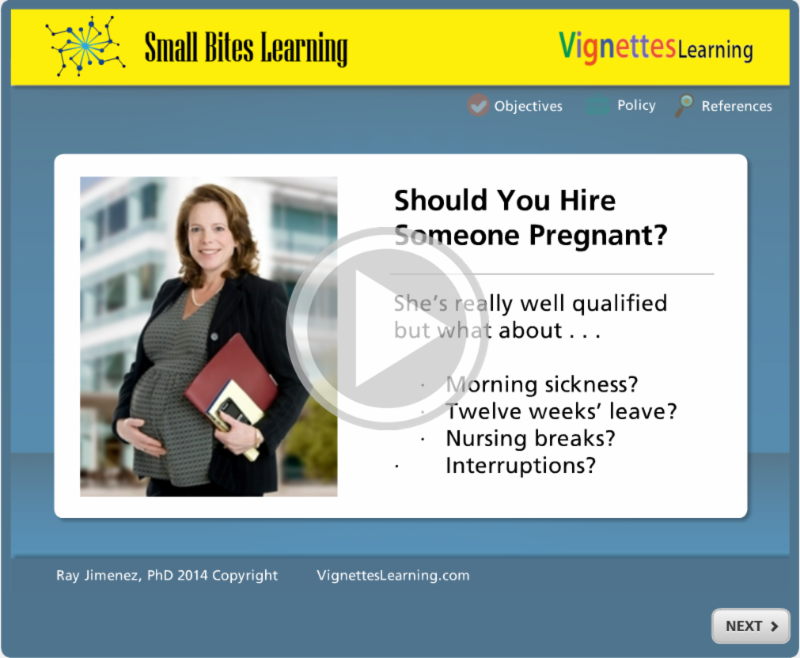
Click here to play the demo.
In the demo we aided the learner to focus on his/her concerns and made the objectives, policy and references (heavy content) as background and secondary information.
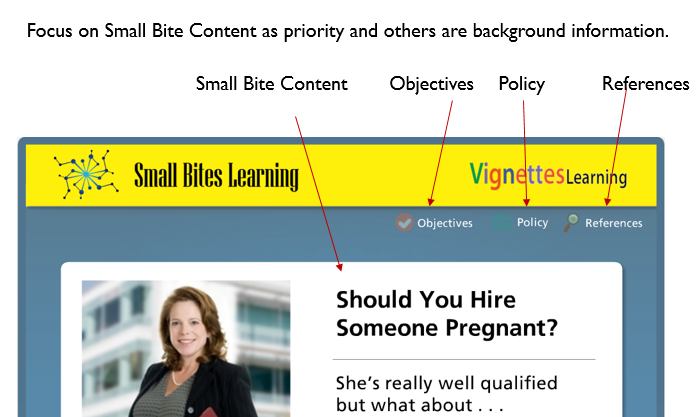
Inverting the lessons from content focus to learner focus
What is the most important step in creating Small Bites Learning?
Ask the learners' concerns
When a subject matter expert (SME) provides you content heavy lessons, ask if you can interview, discover or focus the lessons on "what the concerns are" or "what do learners find most important."
Another question to the learners might be "what work-related issues are you the most concerned about or want to learn the most in relation to the topic?"
For example in the demo on Pregnancy, the concern of learners is about "Should I Hire Someone Pregnant?" They are less concerned with the definition of discrimination.
When we ask "what are the learners' concerns?", we are determining the areas of the content that are highest in learning instances. Learning instances are the parts of the content that learners find most useful and therefore aid them in focusing their objectives and context.
Illustration 5 below the content is inverted. The concerns become the top priority. The concerns have the highest level of 'learning instances."
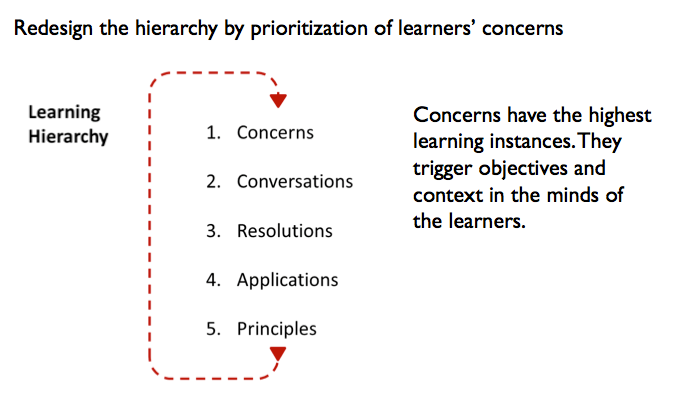
Illustration 5
In illustration 6 below, the topics on the left of the "Concerns", "Should I hire a pregnant woman?" is most important to learners. On the contrary, the topics of applications and the law are the least important to learners. So, in designing Small Bites Learning, we start with the issues that help learners learn faster. This method also allows the small bite lesson to be independent and meets the attributes and criteria.
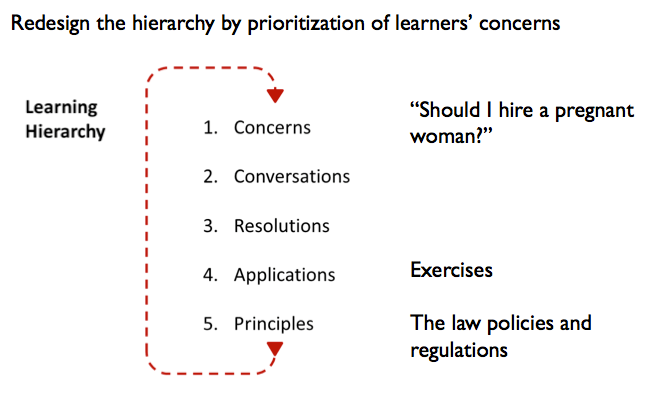
Illustration 6
"Do You Ever Prejudge a Prospect?"
Play the demo link below.
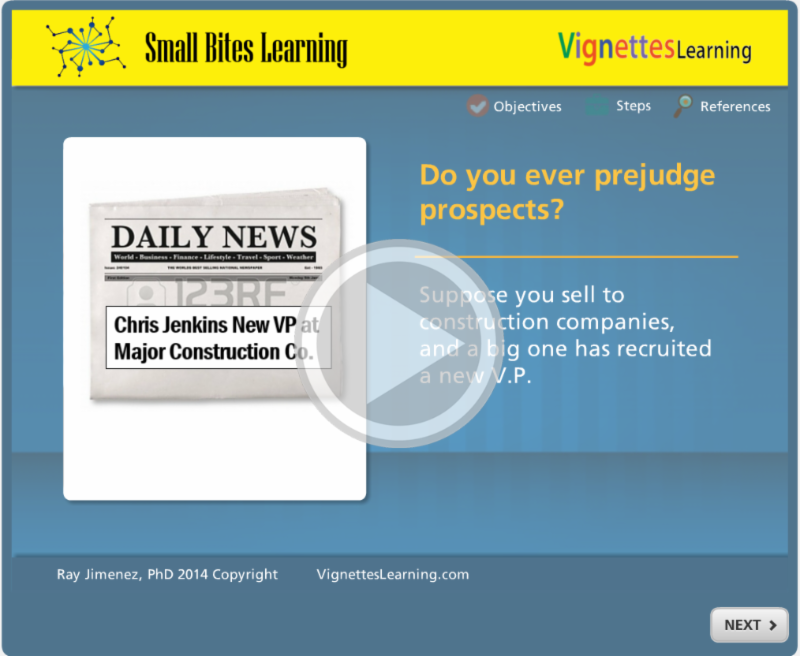
Click here to play the demo.
Conclusion
Small Bites Learning is the fastest and better way to help learners learn. It reduces your cost. Small Bites Learning allows for extreme flexibility of content. You can use the content in different platforms and different modalities. The key approach is to invert the learning design. Focus first and foremost on learners' concerns. Make other content as background and secondary information.
References
Click here to access more information.
|